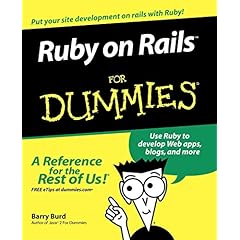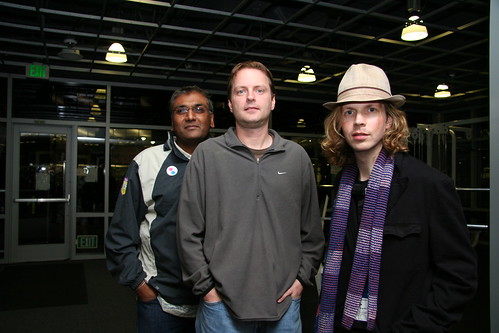Let’s call it YAB, Yahoo! After Beck. Or maybe it should be the Hack Day Revolution. Whatever it is, something transformative happened at Yahoo! last week.
If a year ago someone told me that Yahoo! would support an event where several hundred coders would be invited to sleep in tents on our lawn and get a free concert from a big time musician that people actually care about I would have laughed. Asking these coders to hack away on our APIs (most of which didn’t exist 12 months ago) to build something just for the fun of it would have seemed totally out of character.
But something changed.
It probably started with the Flickr acquisition, and then it advanced with the internal Hack Day program. And finally, Friday night at 9:30pm, this change reached some kind of conclusion or rather blasted off from the launchpad when the Beck video began rolling.
Bradley Horowitz observed in his keynote that hacking is like jamming with a band. The experience of playing together, trying new variations on things, learning from eachother, creating art purely for the sake of creating is what it’s all about. You don’t have to produce songs to enjoy creating music.
Watching Beck and his band muck around on stage mocking themselves and all of us was a pleasure. They are experimental for the sake of experimenting. They reminded us not to take ourselves too seriously.
When I saw the Beck Hack Day video posted on the corporate blog the next day, I realized that something profoundly new and important happened. I’m not sure I fully understand what that is, but it’s very different and very important.
Maybe everyone here is riffing on the idea that Yahoo! is about people not algorithms. Maybe openness is the new voice we’re all singing with. Maybe everyone stopped worrying about the rhythm of the stock price.
My guess is that it’s all those things and much more. Yahoo! finally has the self-confidence it deserves.
The participants of the Hack Day event gave us a mirror to see how this new face fits, and it seems to fit well. There are some nice quotes here:
http://blog.zooomr.com/2006/10/01/part-1-of-2-yahoos-hackday06-was-quite-cool/
I think the best thing that describes Yahoo! is family — Yahoo is an amazing, close family that was gracious enough to open themselves up to over 450 outsiders (including myself) over the last two days from the lowest levels to the very top.
http://blog.myspace.com/index.cfm?fuseaction=blog.view&friendID=32430150&blogID=174679692
All in all, a good time. I am exhausted, and I did not even stay up all night, as some people did (many camped out on the lawn). I met some good people. And I got to hack on computers, a thing I’ve been enjoying a lot more of lately.
http://www.semicomplete.com/blog/geekery/yahoo-hackday-06-part1.html
This event was absolutely beyond any of my expectations. I was expecting a Mashup Camp-style event with a hundred or so people. I certainly wasn’t prepared for the event. Heck, I knew very little about the event before showing up.
http://gesturelab.com/?p=28
And you could take all that metadata and gas receipts and empty Protein Bar wrappers and bar codes and SD drives and extra batteries and Amazon upsells and proprietary Newsgator synchronization APIs and long tails and short walks of long piers, and still not come up with the simplicity of the gesture Chad and Yahoo and Beck and Doc and Dave and we all give when we wave our hands in the air and thank whoever we damn please for the life we are breathing. That’s the critical mass I’m saying.
http://randomfoo.net/blog/id/4106
Reflecting back (and from the inside), I don’t think that Yahoo! Open Hack Day could have gone any better. It blew past my personal best-case expectations. The biggest problem is where to take it from here. But that’s one of those good problems. 🙂
It’s a good question. Where do we go from here? The best part is that nobody really knows, yet. That in itself is as emblematic of the transformation as anything…not knowing the answer yet confident that we are moving in the right direction.
. 9 of them are hitting the shelves within weeks. All of the others were published within the last 6 months.


